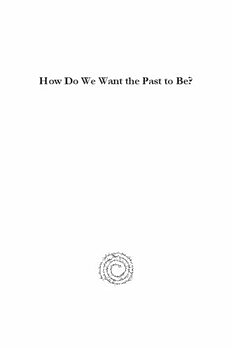
How Do We Want the Past to Be? on Methods and Instruments of Visualizing Ancient Reality PDF
175 Pages·2015·8.718 MB·English
Most books are stored in the elastic cloud where traffic is expensive. For this reason, we have a limit on daily download.
Preview How Do We Want the Past to Be? on Methods and Instruments of Visualizing Ancient Reality
Description:
This volume collects both presentations made on the occasion of a panel organized at the North American Theoretical Archaeological Group, held at the University of Buffalo in 2012, and other invited contributions on the same subject. The papers present the diverse attitudes of archaeologists and art historians in dealing with the visualization of the ancient Near Eastern architectural and material reality. The contributions aim at analysing how ancient architectures and urban space have been recovered and excavated, how the results of those excavations have been presented and their reception in the visual arts. Taking into consideration the way the ancient architecture has been represented through old and new media-thus starting from the most ancient examples of drawings up to the most recent computer-based graphics and creations-it is reasonably time to ask how we want to represent the past and, as a consequence, why we want it that way or another. The analyses in the book also point to the recent debate on the nature and use of 3D reconstructions and virtual reality with the creation of new models and informatics devices: does new technology solve the problems of interpreting and visualizing the archaeological evidences? Beyond technical and aesthetic differences, essays show how archaeologists are still dealing with the same set of problems in projecting a reconstruction of what is either badly preserved or irremediably lost.
See more
The list of books you might like
Most books are stored in the elastic cloud where traffic is expensive. For this reason, we have a limit on daily download.
